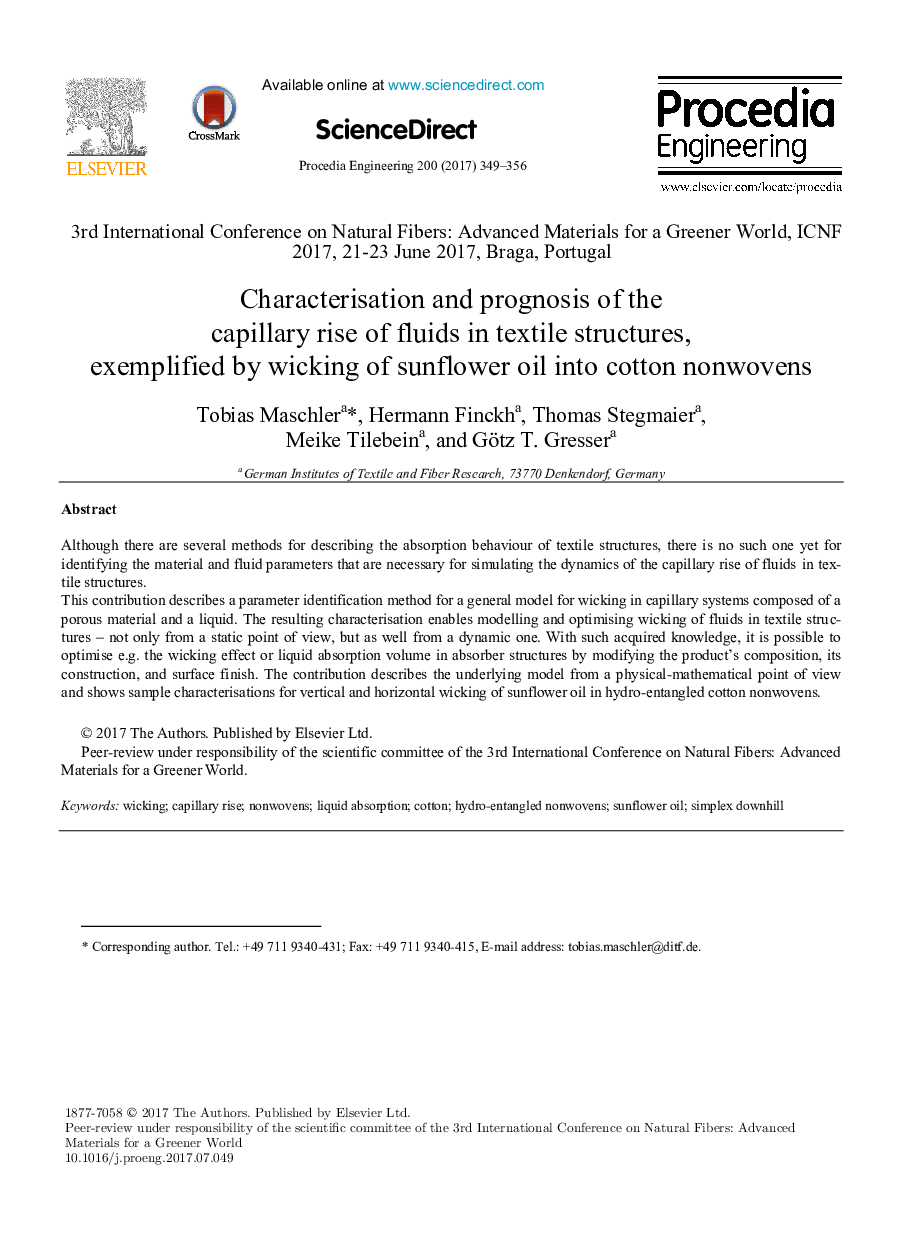| Article ID | Journal | Published Year | Pages | File Type |
|---|---|---|---|---|
| 5026710 | Procedia Engineering | 2017 | 8 Pages |
Abstract
This contribution describes a parameter identification method for a general model for wicking in capillary systems composed of a porous material and a liquid. The resulting characterisation enables modelling and optimising wicking of fluids in textile structures - not only from a static point of view, but as well from a dynamic one. With such acquired knowledge, it is possible to optimise e.g. the wicking effect or liquid absorption volume in absorber structures by modifying the product's composition, its construction, and surface finish. The contribution describes the underlying model from a physical-mathematical point of view and shows sample characterisations for vertical and horizontal wicking of sunflower oil in hydro-entangled cotton nonwovens.
Related Topics
Physical Sciences and Engineering
Engineering
Engineering (General)
Authors
Tobias Maschler, Hermann Finckh, Thomas Stegmaier, Meike Tilebein, Götz T. Gresser,
